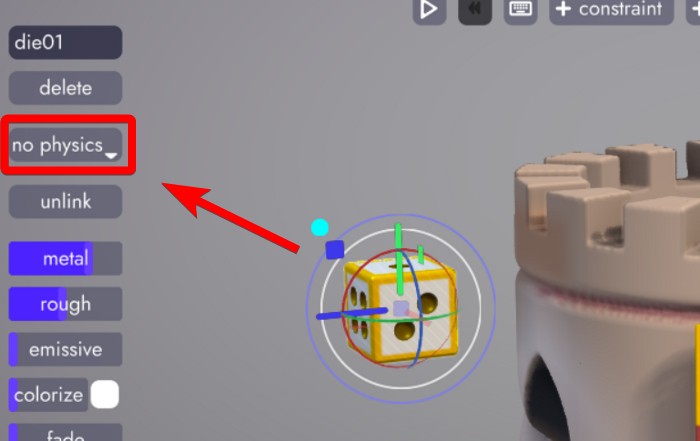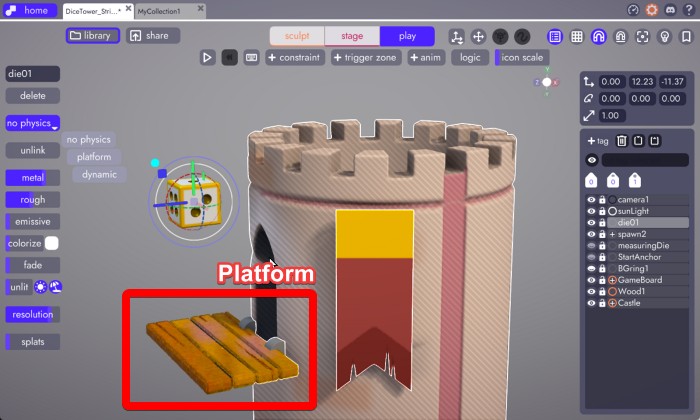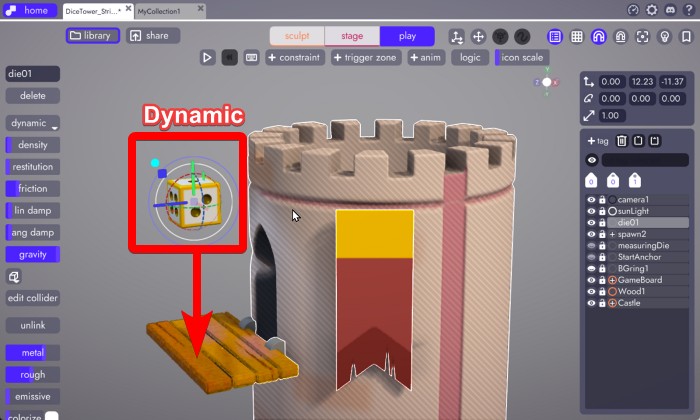Enabling Physics
In order for a model to participate in physics interactions, it must first be given a physics type. With a model selected, you will see a dropdown indicating that model's physics type. By default this is set to "no physics".

Important Note
The physics type dropdown only appears in the Stage and Play modes. If you have a model selected and do not see the physics type dropdown, you might be in Sculpt Mode. If you are not in Sculpt mode and still don't see this dropdown, you may need to update to the latest version of unbound, which you can download for free here.
Physics Object Types
The Unbound physics implementation recognizes two types of physics objects; platform and dynamic. In this article we're going to cover the difference between them and when you should choose one over the other.
Platform
Models set to type Platform can be collided with but will not be affected by gravity. Other physics objects will collide with it, but the platform will not be influenced by that collision. These are most often used for floors and walls... things with a large enough mass in the real world that bouncing a ball against them would have no effect on the object.
Tip
If you were making a billiards game, the table would be set to Platform.
In the example below, the wooden plank is set to platform because other physics objects need to land on it but the plank should not be affected by the impact.

Note
Platforms can be animated or moved with logic blocks or directly via Lua code, however in some cases you may see unexpected results if both the physics engine and your logic are trying to act upon one platform at the same time.
Dynamic
Models set to Dynamic are affected by gravity and will be influenced by all other physics objects. This means that if two dynamic objects collide with each other they will rebound from the collision with a new direction and velocity based on their physics properties (such as density, friction, etc - physics properties are covered in this article) These are most often used for projectiles or objects you wish to move or fall naturally.
Tip
If you were making a billiards game, the balls would be set to Dynamic.
In the example below, the die is set to Dynamic so that it will fall towards and then land on the platform.

Once you've chosen the proper physics type for a model, it's time to set up collisions. For more on that, read the Physics Collisions article